
What is the problem?
Full-scale war has been ongoing in Ukraine for two years. As of January 2024, the documented damages to infrastructure in Ukraine totals more than $135 billion. Since full-scale hostilities began in February 2024, 20,000 high-rise buildings and 151,000 private homes were destroyed or damaged, 3,505 health infrastructure facilities have been damaged, and more than 3,790 educational institutions have been damaged or destroyed.
The United Nations, the government of Ukraine, the World Bank, and the European Union calculated how much money would be necessary to rebuild Ukraine after the war. According to UN Assistant Secretary-General Miroslav Jenca, the preliminary cost of restoring Ukraine could be more than $400 billion.
What is the solution?
Some hold the opinion that it is first necessary to end the war first before starting to talk about reconstruction — since Russia continues to terrorize Ukraine. Hostilities have not stopped, and there will likely be much more destruction ahead. However, world experience proves that a country's reconstruction after war is a long and deep process that may take decades. Therefore, the time to start is now.
On this path, Ukraine is already being supported by international partners — Estonia, Denmark, Japan, France, and others are already joining in supporting reconstruction, financing it, and providing necessary expertise. However, the Ukrainians do not just wait for help but also act as innovators, applying new and unique recovery methods.
Rubryka has collected several examples of trends and exciting approaches to recovery that Ukrainians have used over the past year.
How does it work?
Everything starts with sorting
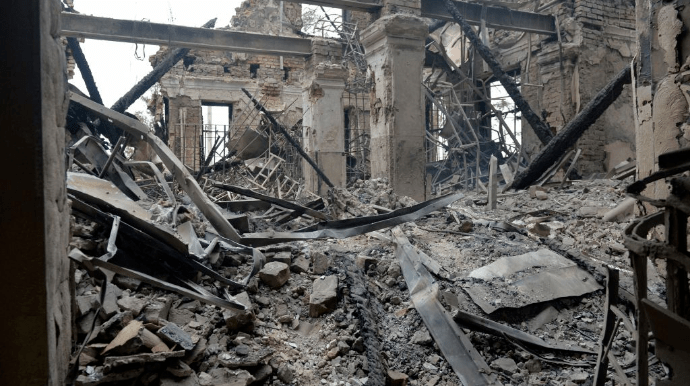
Ruins in Kharkiv. Photo by Getty Images
During the war, the volume of destroyed buildings reached 670 thousand tons. As reported by Ukraine's Ministry of Environment, the amount of demolition waste in Ukraine can already be compared with the average amount of solid household waste generated annually. All of it must be properly disposed of — but at the same time, a significant part of it can be used for reconstruction.
Ukraine's government has approved a procedure for the handling of demolition waste. Kyiv region was the first to implement, it on a pilot basis. There are already 62 temporary sites holding 144,000 tons of war waste. Local communities take demolition waste to interim storage sites, where they are further sorted. In parallel with this, a waste processing enterprise is being created, which will be built by the Japanese company Miyamoto International. Land is being prepared for it, and the processing plan is already fixed. Processed waste can be used as material for further reconstruction.
In Kharkiv, Ukraine's second largest city, sorting and reuse of demolition waste has also been established. Some waste, such as glass, metal, plastic, and concrete, is sent for recycling after sorting. The Kharkiv communal enterprise, which sorts the debris of destroyed buildings, already uses a concrete crusher to get fractions of concrete to be used again in reconstruction. The rest of the waste which cannot be processed — for example, heat-deformed elements of thermal insulation of facades — will be safely disposed of, or buried.
Destruction waste turns into future bricks in new houses
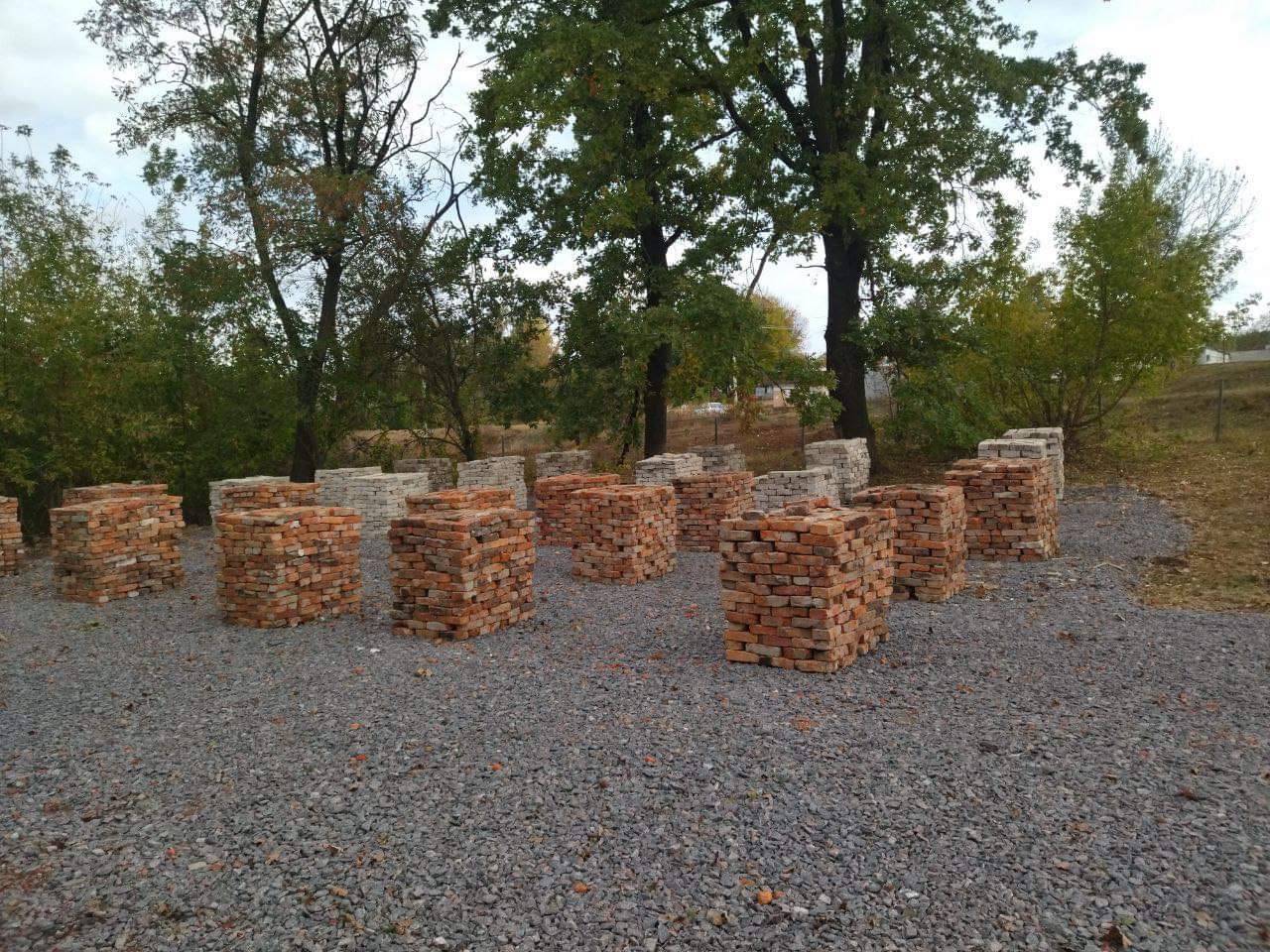
Bricks removed from the ruins of the village council in the village of Ruska Lozova thanks to the initiative Circular Construction in Practice. Photo from the archive of NGO Zero Waste Kharkiv
In the Kharkiv region, an initiative is working to directly transfer destruction waste to residents so they can use it to rebuild their homes. The project Circular Construction in Practice was created and implemented by Zero Waste Kharkiv. When dismantling buildings destroyed by the Russians, the organization sorts any building materials that can be reused — bricks, wood, surviving windows, and doors.
Within the framework of the project, two destroyed houses have already been disassembled and sorted into fractions until now – that means almost 20,000 bricks that can be used for restoration.
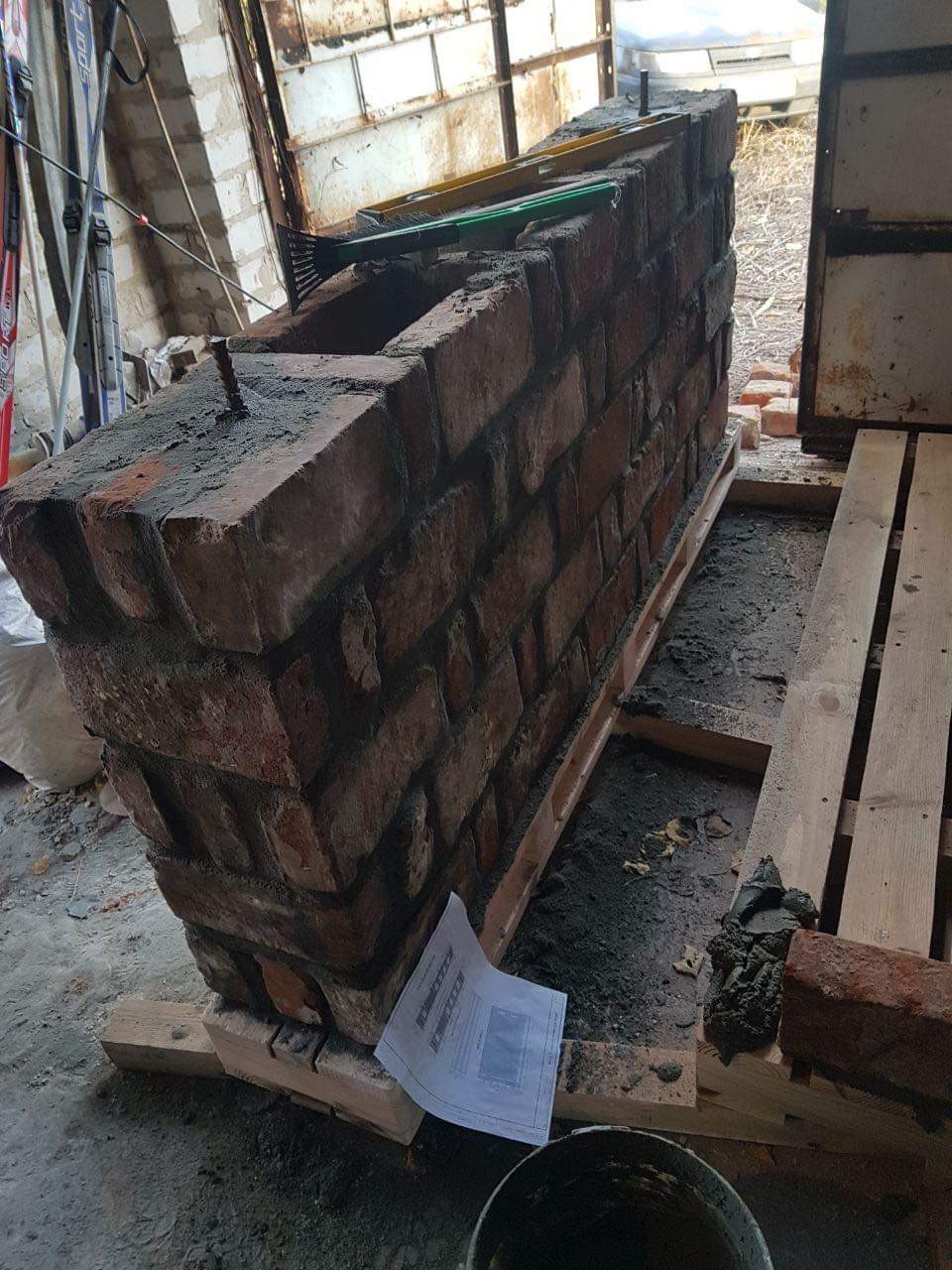
A demo version of a wall made from demolition waste. Photo: Zero Waste Kharkiv
In addition, on the site in Ruska Lozova, Zero Waste Kharkiv has constructed two experimental walls to demonstrate to people how bricks and even their smallest fractions can be reused. Demo versions of the walls are built according to the principle of a well, and fine waste (crushed bricks, remains of insulation) is poured inside – such walls are energy-efficient, and the masonry method allows for the maximum use of demolition waste.

The process of crushing construction waste.
Construction debris left behind by destroyed houses can be put to use not only as a filler – in Hostomel, crushed bricks and concrete have the potential become new buildings.
Debris from the destruction here is turned into construction materials thanks to Neo-Eco Ukraine, which specializes in environmentally friendly restoration of damaged objects. For more than 17 years, it has been working according to the principle of the closed-cycle economy. Neo-Eco Ukraine also uses circular economy methods, and chose the reconstruction of a military town in Hostomel as a pilot project, where all processes — from the analysis of the object to obtaining new construction materials — take place according to the principles of the closed cycle economy.
Work on dismantling the destroyed three- and five-story buildings began in the military town a year ago. Everything from waste processing to new materials takes place right on-site, thus saving time and fuel. In the processing process, not a single kilogram of garbage was sent to landfills. Concrete blocks, which used to be the concrete frame of houses, were forged right on the site — turned into building material for a new home. Bricks will be used to raise the level of land plots or to build temporary roads on construction sites. Wood, glass, and plastic were also sorted and sent to specialized companies. Some hazardous materials, such as asbestos, were disposed of.
Construction on the first building using recycled construction waste is planned to be completed by the end of 2024. All apartments will be distributed primarily to the residents of demolished buildings.
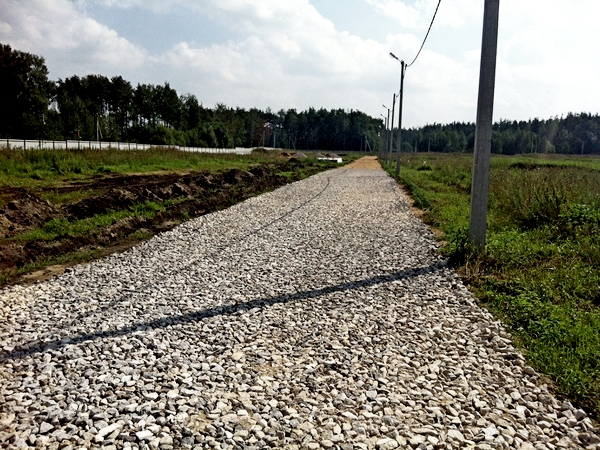
Backfilling of the road.
Recycled construction waste, although it will not always become a new home, can serve other purposes. For example, the local authorities plan to use the contents of the landfill in Irpin to construct roads. However, opportunities are not limited to roads. Thus, within the U-LEAD with Europe program framework, the NGO DESPRO created an informational brochure offering other ways of using different types of demolition waste.
Comprehensive reconstruction
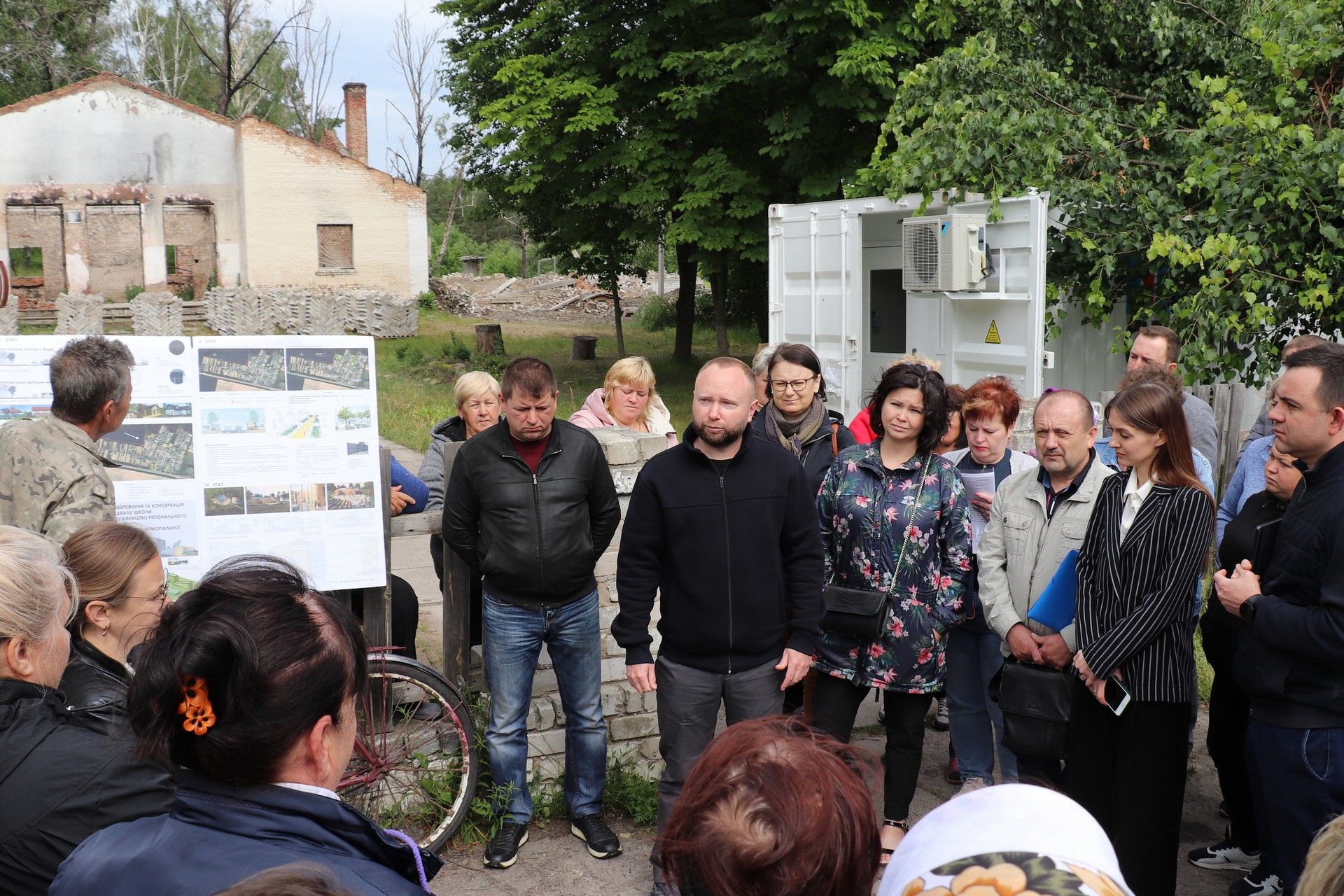
Residents of Yahidne at the presentation of the comprehensive reconstruction of the village project. Photo: Facebook
Ukraine's recovery plan is not just about rebuilding destroyed roads and buildings. This is a complete transformation of Ukraine, based on the "Build Back Better" principle, and the country's integration into the European Union. Six settlements have been chosen to be the first to be comprehensively rebuilt: Borodyanka and Moschun in the Kyiv region, Trostyanets in the Sumy region, Posad-Pokrovske in the Kherson region, Tsyrkuny in the Kharkiv region and Yahidne in the Chernihiv region.
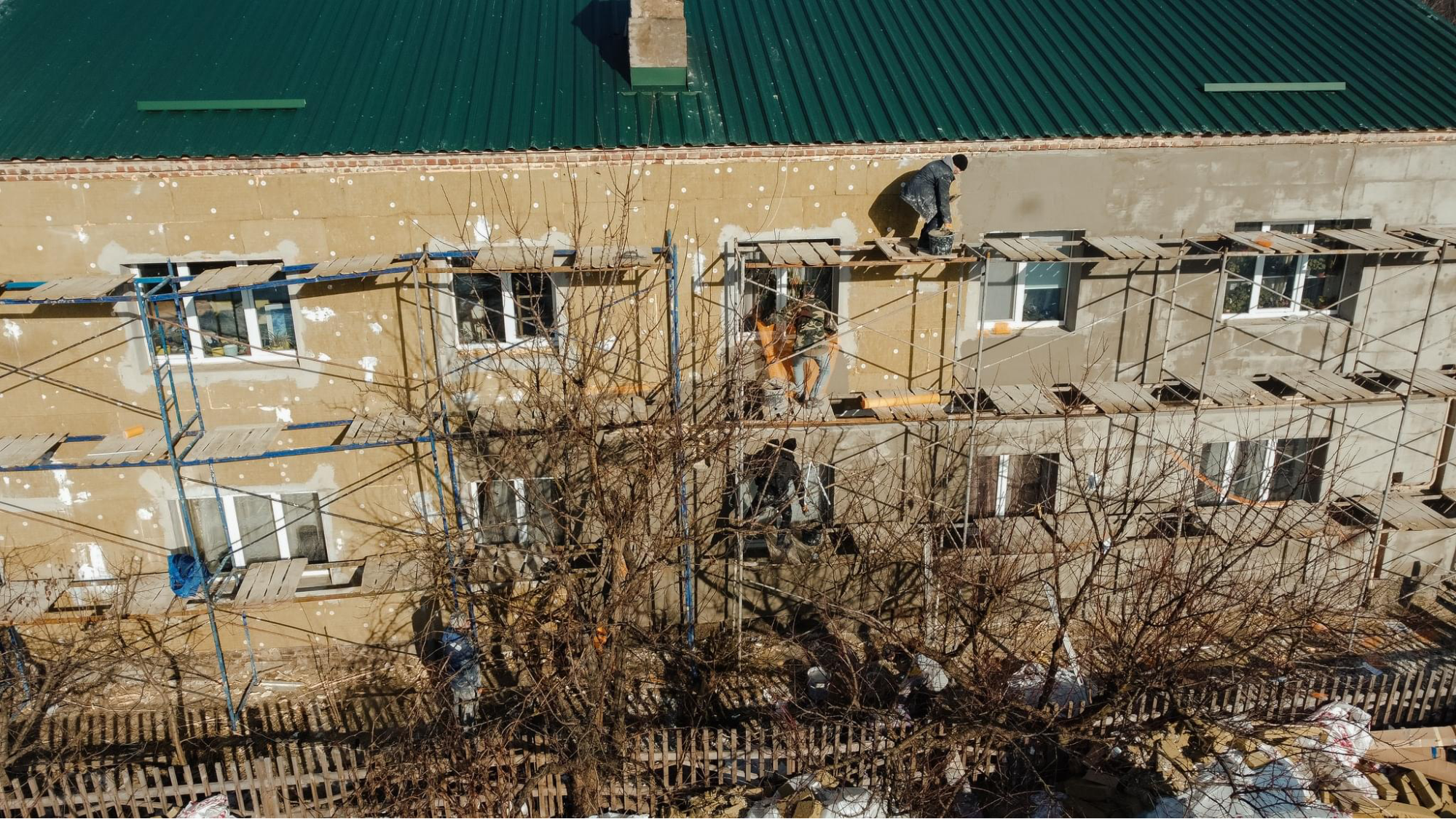
Repair of a house in Yahidne, the Chernihiv region. Photo: Ministry of Development of Communities, Territories and Infrastructure of Ukraine
The village of Yahidne is being restored according to the principle of "Build Back Better." Therefore, the village will build a public space with an assembly hall and a medical department instead of the destroyed library and club. The settlement is planned to be restored in a single architectural ensemble.
Since the middle of 2023, the reconstruction of 118 buildings have begun here, and four stages of reconstruction are envisaged:
- The restoration of people's housing is the first and largest stage. It will include the replacement of the roof, windows and entrance doors, and insulation.
- In the second stage, a complete reconstruction of the streets will be carried out.
- The third and fourth stages will be devoted to creating public spaces — particularly the construction of a museum and the arrangement of a local park.
In general, the project is designed not only to rebuild individual buildings but also to transform the entire village.
Combining tradition and modernity

Restoration of the school-house in the Mrynska community.
Another trend is an individual approach to rebuilding each community. In particular, the combination of traditional techniques with modern ones and preservation of authenticity — both in the process and in the result. This is how the Lykhachiv lyceum of the Mrynska village council in the Chernihiv region was restored. In early 2022, this school, built at the beginning of the 20th century using the ancient Ukrainian technology of mud houses, was damaged by fragments of a Russian missile.
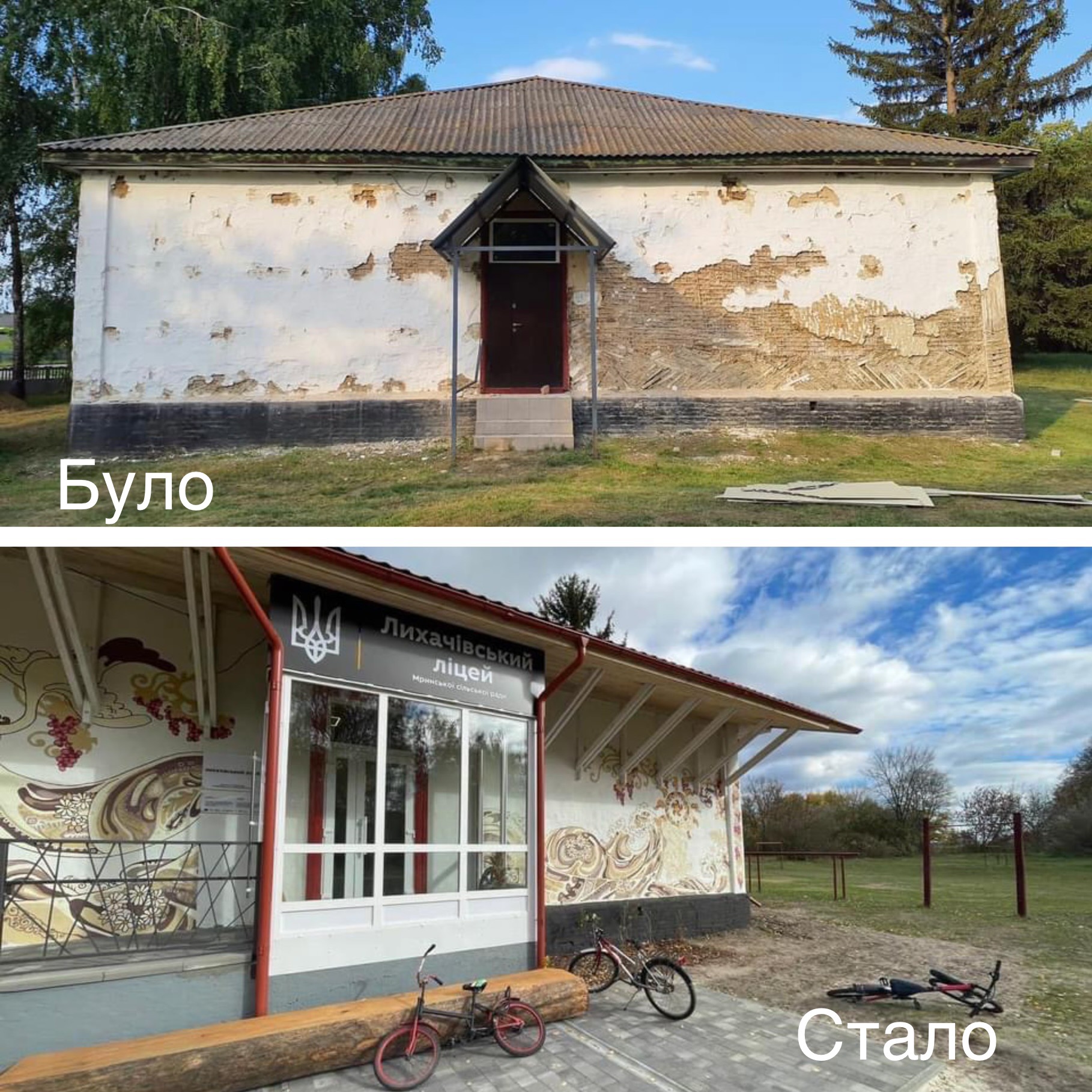
A before and after of a century-old wattle and daub school in Lykhachiv, Chernihiv region. Photo: Brave
Already in the summer of 2023, more than 70 volunteers from the Brave to Rebuild community from Ukraine, Spain, and Canada worked on restoring the school. They were joined by local volunteers — more than 30 residents of the Mrynska community. The main feature of the reconstruction of the school is the reconstruction of the walls using the plaster house technology. It is environmentally friendly and complies with all building regulations, but, in addition, it helps to preserve authentic Ukrainian architecture. The restored lyceum is the largest object in Ukraine plastered with clay during the years of independence.
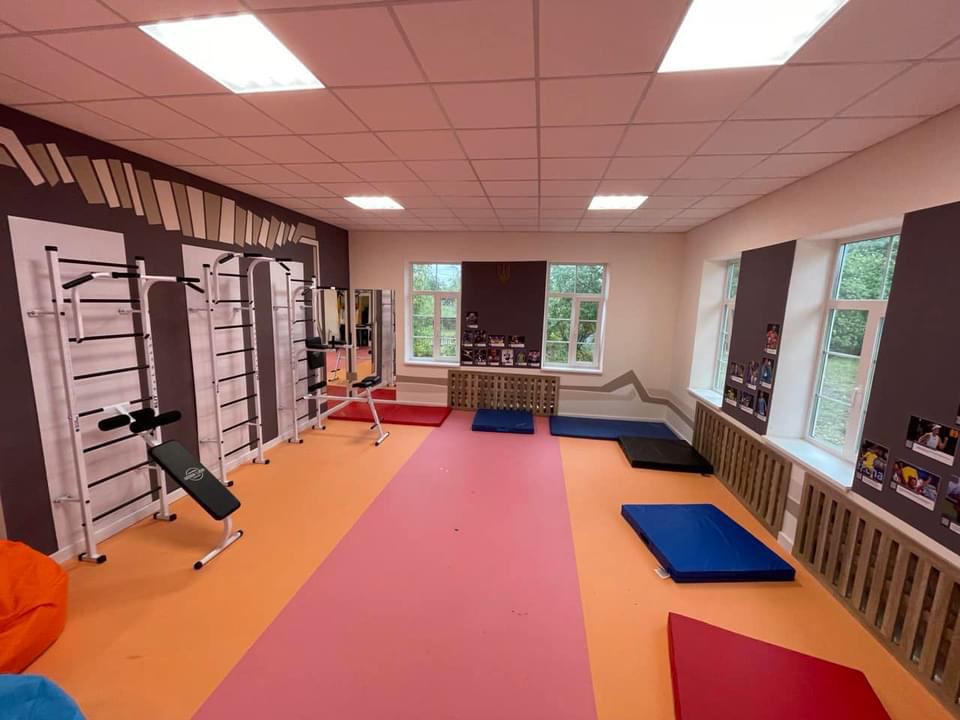
A modern gymnasium in the Lykhachiv School. Photo: Brave
"I believe that such an approach is very appropriate now. First, we used local materials such as sand, clay, and straw in our work. This is a feature of a proud Ukrainian village — to build from what it has. The second component of traditional construction is the toloka format, when everyone is working together to perform urgent tasks requiring a large number of workers, such as harvesting, logging, building houses. It is more relevant than ever," said master Mykola Stepanets, who taught volunteers the ancient art of plastering.
However, the use of traditional techniques did not prevent the modernization of the school and the improvement of accessibility. So, the Lykhachiv lyceum has modern interiors, a convenient entrance group with a ramp, a new roof and windows, new lighting, and fire and sound alarms.
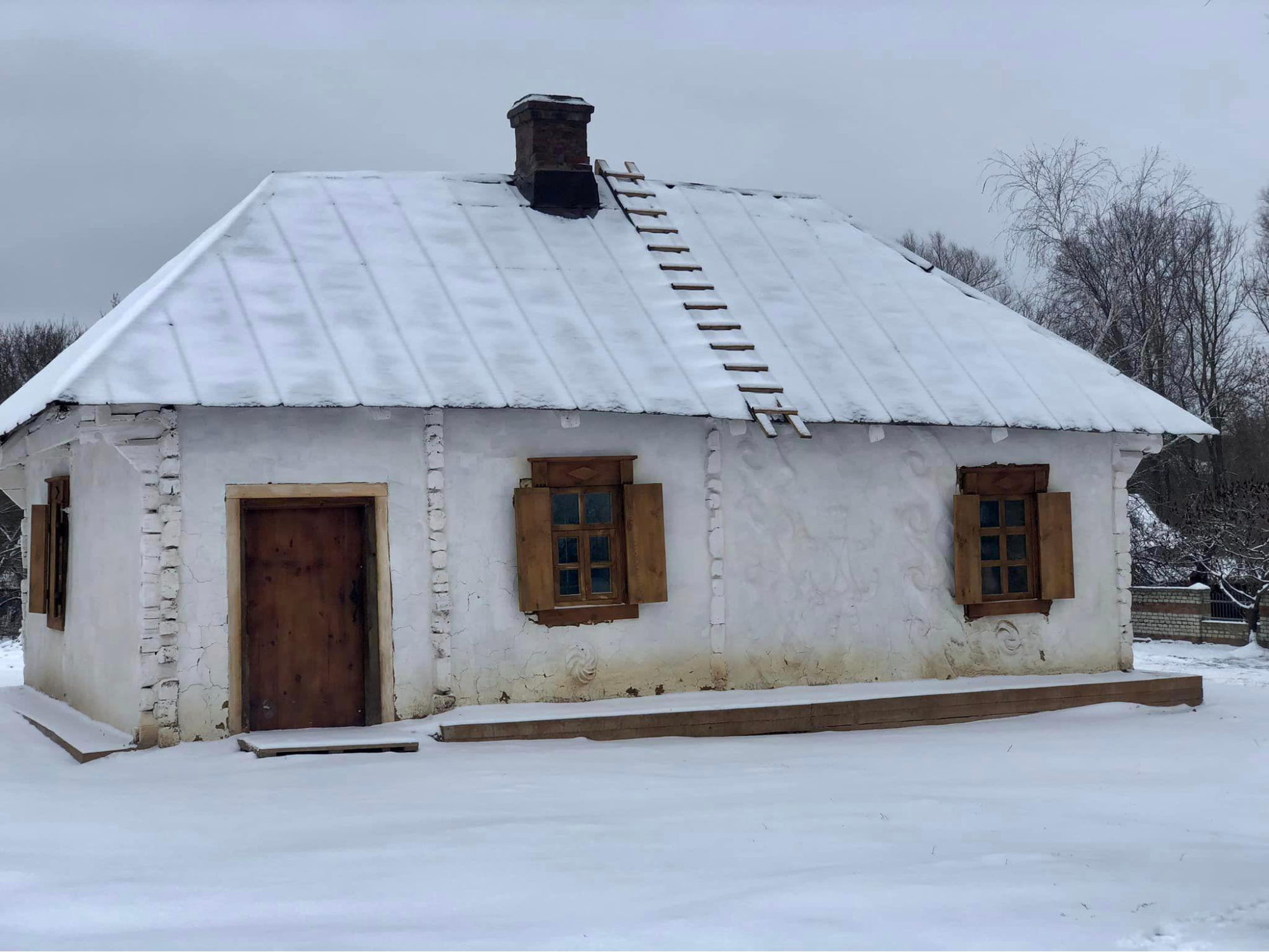
The restored 100-year-old mud house in the village of Cherneshchyna, Krasnokutsk community. Photo: НLYNA-hub
Similarly, a hundred-year-old mud hut in the Kharkiv region in the Krasnokutsk community was restored. In the restoration process, the artisans conducted master classes for the locals — decorating windows and doors, working in a forge, and making a chimney. Everything is done using traditional techniques.
A space for community creation was created in the restored house, and master classes continue to be held there. So, for example, a master class was held for schoolchildren on making adobe blocks — this is an environmentally friendly, low-cost option for building a quick house. This approach is based on available local resources (clay) and traditional approaches in construction. It can also be used in reconstruction.
Digitization
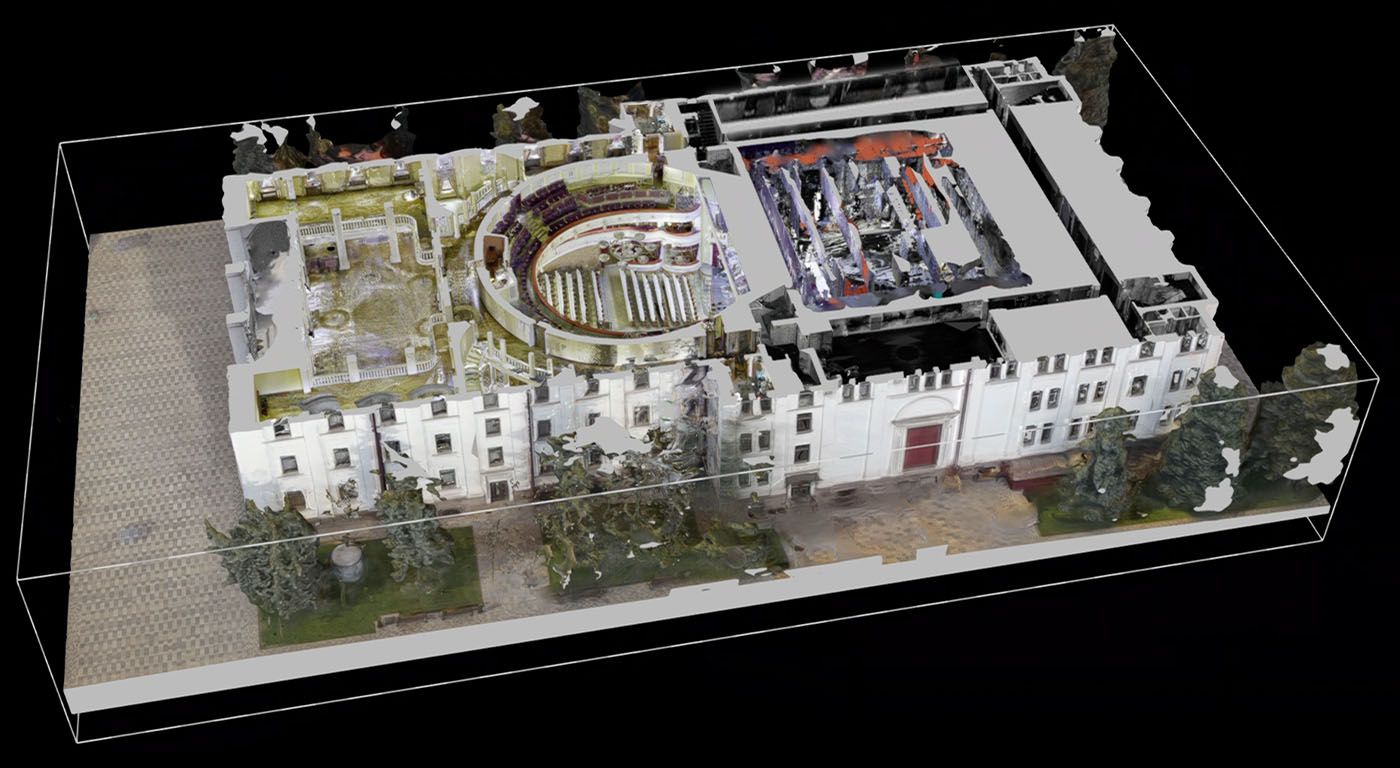
3D model of the Drama Theater in Mariupol, created by the Skeiron team. Photo: Skeiron
3D scanning for preserving architectural heritage is also a new experience for Ukrainians. It is not only about preserving architectural heritage in a digital version but also about additional tools for reconstruction. This is how Notre Dame was restored after a devastating fire. Ukrainian architects have already started digitizing the most valuable objects, and relying on the experience of foreign colleagues, they can even restore the destroyed.
Thus, starting in March 2022, the Lviv Skeiron project has been scanning architectural buildings to digitize them and, in case of destruction, be able to restore them. They focused on Lviv — the city's historic center is included in the UNESCO World Heritage List, so its preservation was prioritized.
As part of the Save Ukrainian Heritage project, the team has already scanned about 250 cultural objects in western Ukraine.
Skeiron has another project strictly related to Mariupol — Save Mariupol Heritage. Thanks to a crowdfunding campaign to collect photos and videos, the project team collected thousands of photos and created a 3D model of the Mariupol Theater, which was destroyed by Russian bombing. You can try a 3D tour of the drama theater on the project website. In addition, the team is currently looking for photos that could be used to create 3D models for other cultural monuments of Mariupol. This not only draws the world's attention to the extent of destruction in the currently occupied city but also gives hope that with its liberation, the destroyed will be rebuilt.
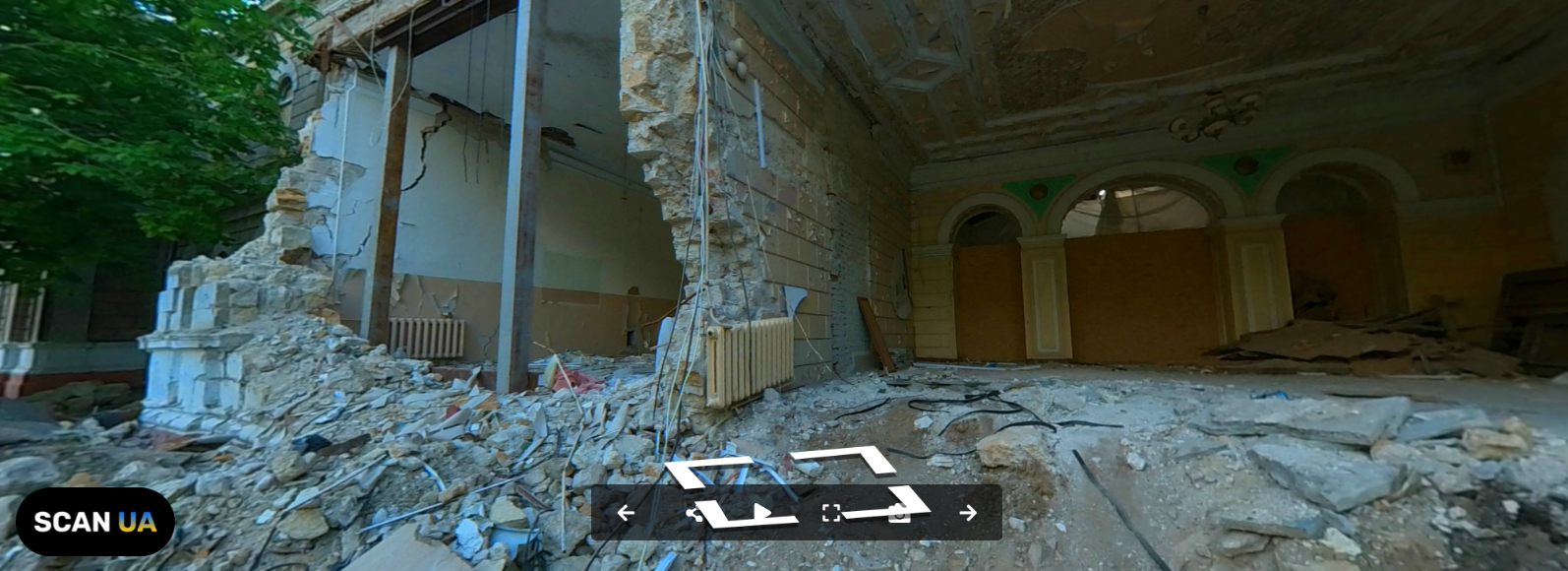
The first Ukrainian gymnasium named after Arkas, in Mykolaiv, is an architectural gem of the 19th century, which was seriously damaged by Russian S-300 missiles. The ScanIA project team scanned the ruins of the gymnasium. Screenshot of the 3D model from the Skeiron website
Kyiv architect Serhii Revenko and his partner web designer Mykyta Solopov created 3D models of Ukrainian historical buildings that were destroyed due to Russian armed aggression. The architect founded the ScanIA project and, through it, has tried to show the Ukrainian heritage and the damage of the war.
Among the scanned objects are the destroyed buildings of the library and cinema in Chernihiv, the Church of the Ascension in Lukashivka in the Chernihiv region, the school and fire station in Kharkiv, the destroyed bridge in Irpin and the psychological rehabilitation center in Borodyanka. The architect also scanned a residential building destroyed by a kamikaze drone in Kyiv on Zhylyanska Street.
Preserving digital cultural heritage is not the only purpose of technology. In particular, it is also used in the Bokarius Institute of Forensic Examinations. The laser scanning method is used to assess and fix damage to buildings and infrastructure. This allows you to fix the smallest damage and cracks, significantly saving experts time.
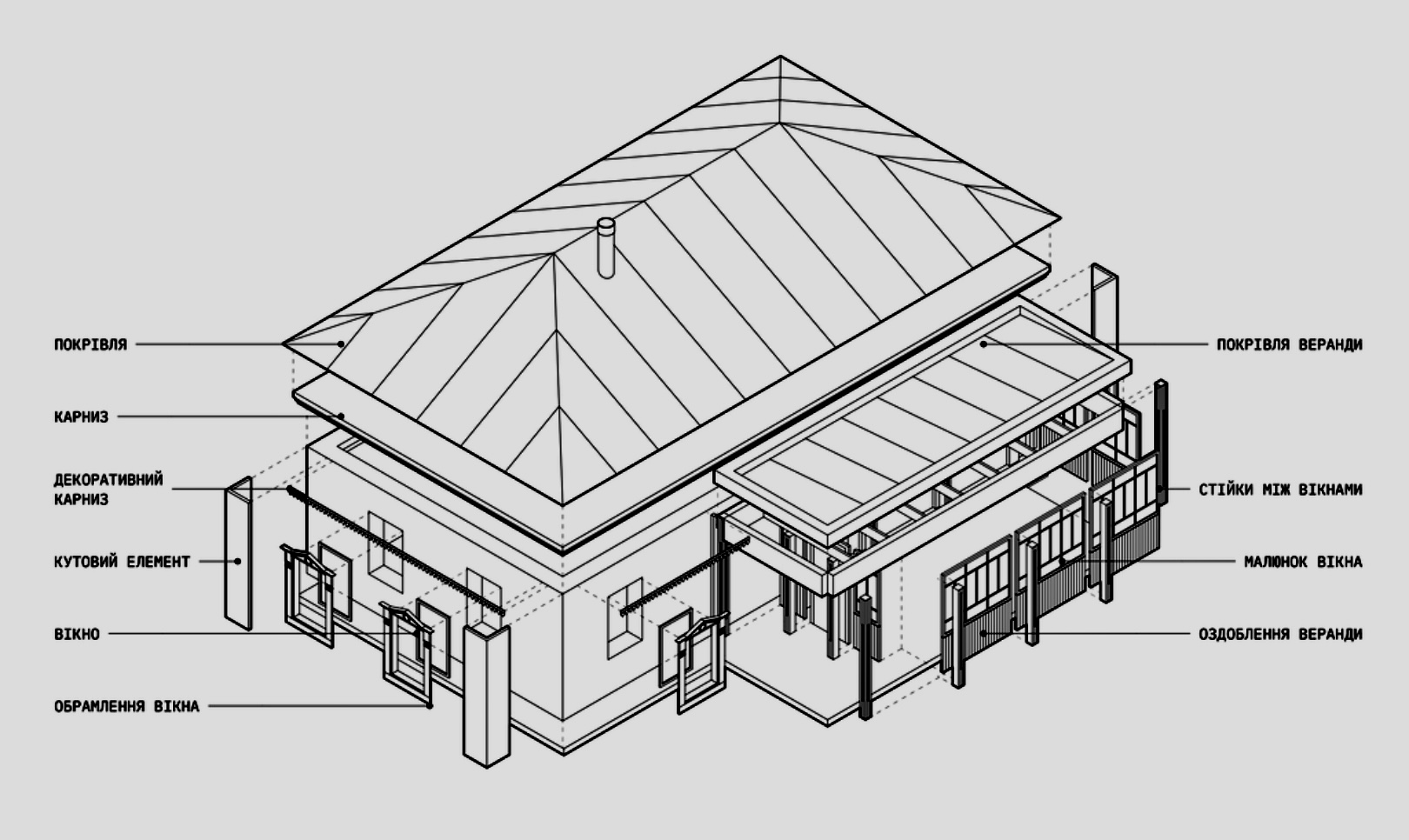
The RE:Ukraine Villages online designer will offer design elements typical for the selected area — both basic and decorative. Photo: RE:Ukraine Villages
Another interesting project is the RE:Ukraine Villages online designer from the architectural studio Balbek bureau. It dates back to June 2022, immediately after the liberation of part of the Kyiv region. The goal of this initiative is to preserve the formed organic image of Ukrainian villages and not allow it to be erased by typical buildings.
Thanks to the practices of digital architecture, the project team formulated the design code of the liberated areas. They collected their findings and observations in an accessible online constructor to help homeowners quickly make the necessary decisions and begin reconstruction.
Behind the creation of the platform is a tremendous amount of work — research expeditions, photo and video shooting by dozens of volunteers, data analysis and modeling, as well as the development of the designer itself, which architects call one of the most technological tasks in the history of the bureau. After creating a house in the designer, the user receives ready-made instructions for housing reconstruction. On the platform, you can choose the size of the house, the layout, the configuration of the veranda, windows, roof, color scheme, and even such small things as the pattern of the window and the decoration of the decorative cornice. All this considers the architectural features characteristic of the area the user chooses.
Currently, within the framework of the project, it is possible to develop instructions for housing reconstruction in four regions of the country: Kyiv, Chernihiv, Sumy, and Kharkiv. More than 200 million house options are available for the Kyiv region alone.
Newsletter
Digest of the most interesting news: just about the main thing







